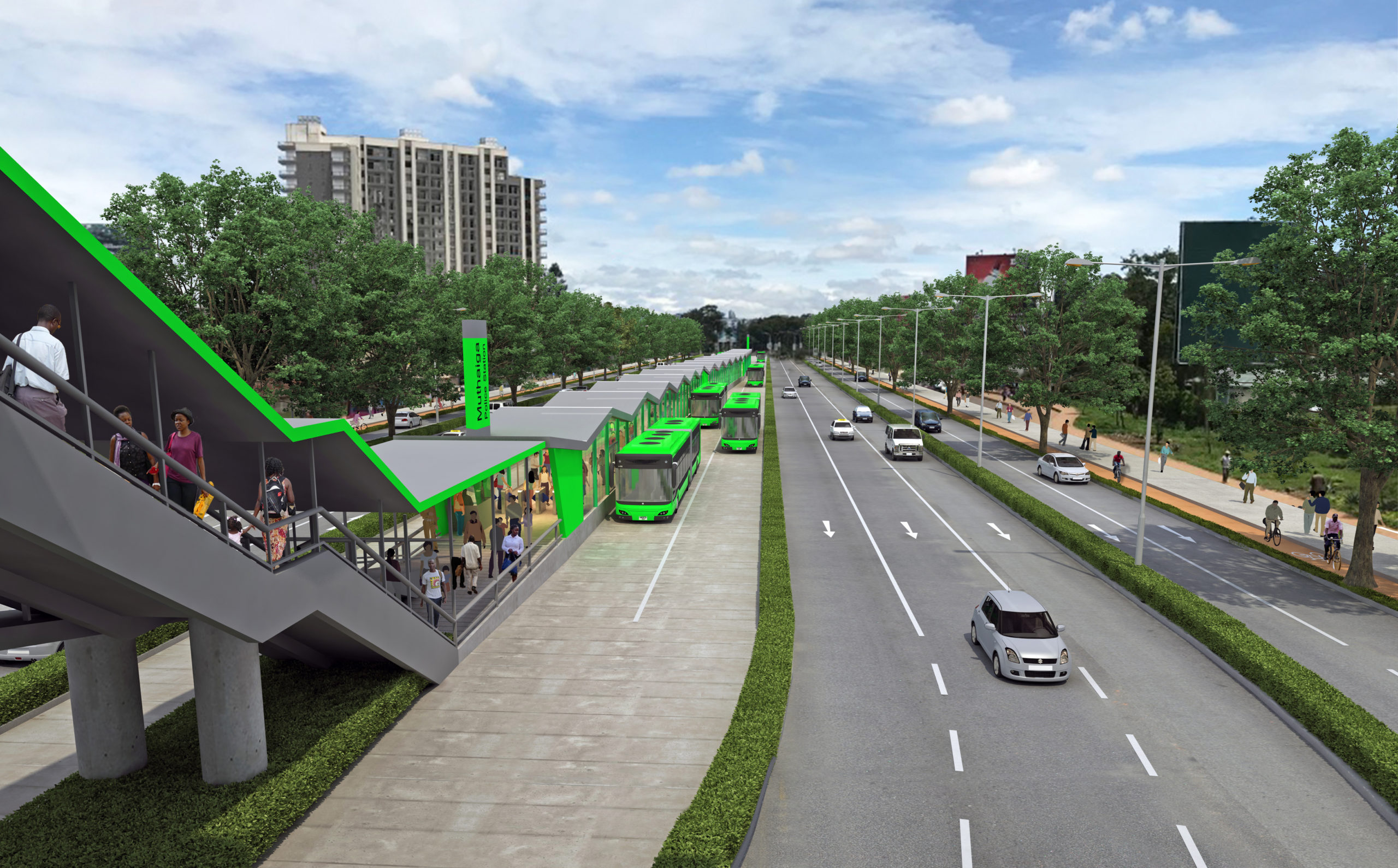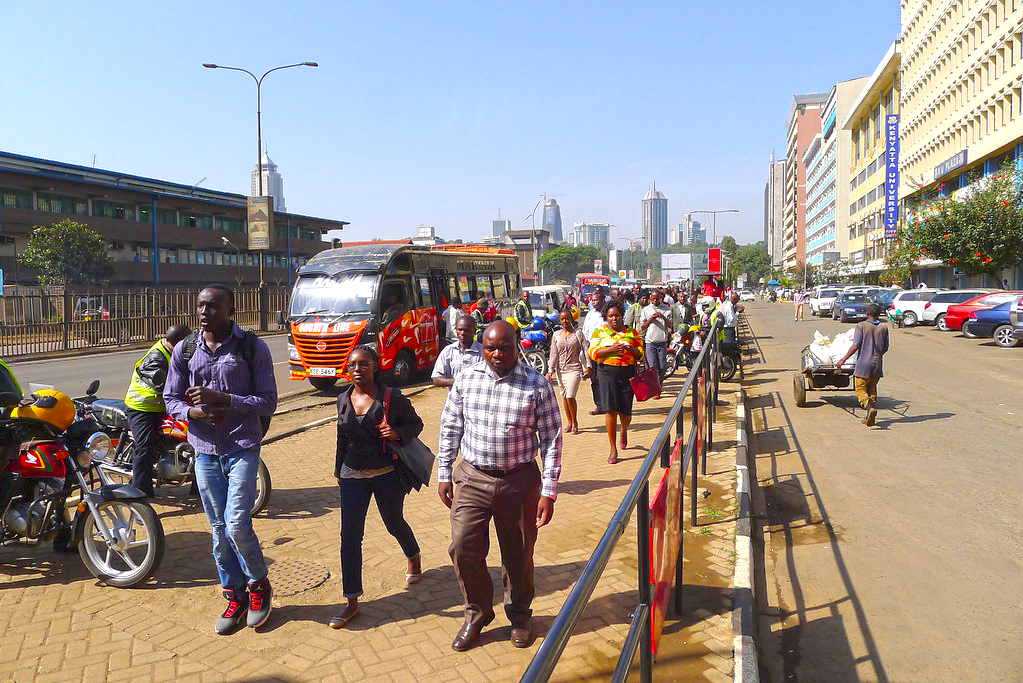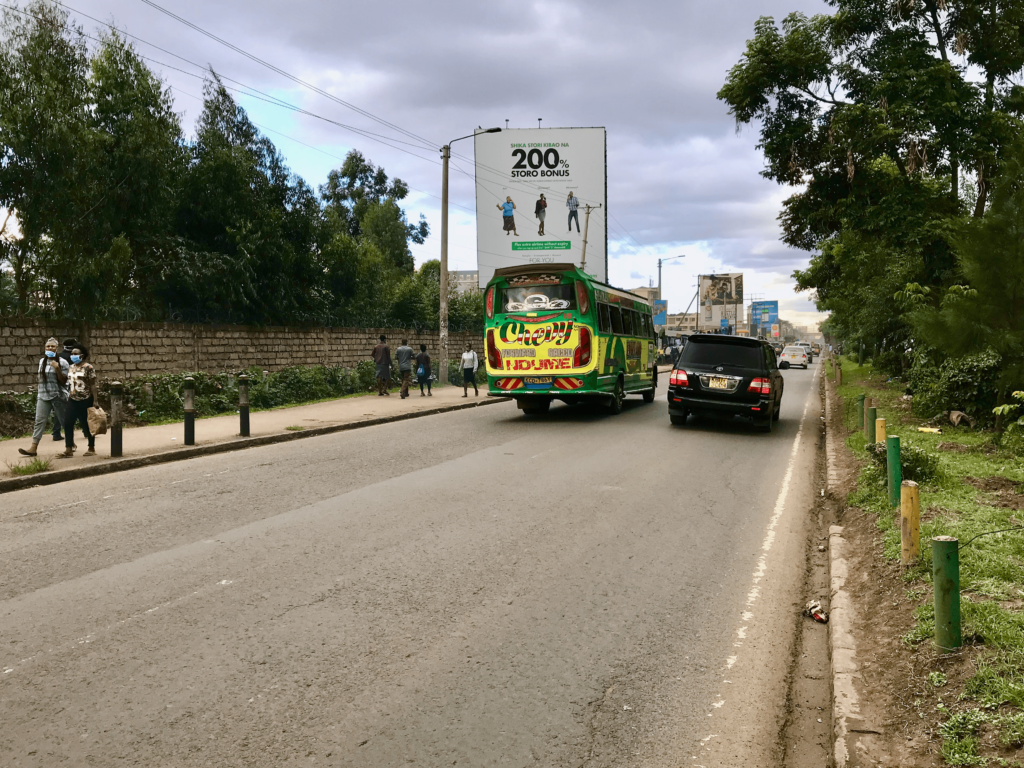January 15, 2021
Seven steps Nairobi should take to prioritise sustainable mobility in 2021

Over the years, Nairobi has contemplated how best to solve the increasing congestion in the city. Proposed solutions have included projects such as road widenings, flyovers, and elevated highways. Yet the only viable long-term solution for ensuring mobility is to build high-quality facilities for public transport, walking, and cycling. These modes can carry large numbers of people without an exponential increase in road space requirements. Transitioning from matatus to high-capacity public transport buses as part of a bus rapid transit (BRT) system would transform the public transport experience in Nairobi, saving time, reducing commuting costs, and encouraging city residents to use public transport as a more efficient alternative to private vehicles.
To achieve lasting solutions to congestion problems in the city, Nairobi should consider pursuing the following people-friendly mobility initiatives:
- Implement passing lanes and CBD infrastructure as part of the BRT Line 2 project. The Line 2 BRT project on Thika Road is a great opportunity to introduce modern public transport services. However, to deliver on its potential, the system needs to follow a robust service plan and infrastructure design in line with the BRT Standard. A good design would have dedicated lanes in the CBD and along the portion of Thika Road where congestion is most severe. The entire corridor needs passing lanes at the BRT stations, to avoid bus bunching and to enable the operation of express services. Without these features, BRT Line 2 will carry a fraction of the public transport users on Thika Rd, with the result that most matatu passengers will be stuck in worse traffic in the remaining mixed traffic lanes.
- Reenvision ongoing projects with priority for BRT. Upcoming infrastructure projects such as the proposed flyovers in Upper Hill and T-Mall and the Nairobi Expressway all lie on gazetted BRT corridors and should have adequate provisions for BRT and non-motorised transport. An urgent design review is necessary to incorporate dedicated BRT lanes and stations in the designs for these projects. The Nairobi Expressway project should incorporate BRT infrastructure at ground level. Once in operation, the Expressway should allow public transport vehicles to use the express lanes free of charge, without the need to queue at toll gates.
- Introduce cross-town PSV services rather than enforcing a CBD ban. As Nairobi works to decongest the central business district, transport plans should prioritise the needs of passengers. Instead of enforcing a CBD public transport ban, which would increase the average walk time for commuters who need to transfer from one route to another from 15 to 31 minutes, the city should introduce new cross-town routes to serve high-demand corridors. Cross-town services would reduce the number of passengers who need to transfer in the CBD by at least 156,000 passengers per day. Convenience for commuters would be greatly improved, and direct services would reduce matatu volumes in the CBD, without the disruption of a full ban.

- Reform matatu management to improve service quality. To improve the quality and safety of public transport services—both on BRT and regular public service vehicle (PSV) lines—Nairobi needs to move from the target system to an improved business model where operator compensation is tied to service quality rather than the number of passengers carried. For this transition to succeed, it is key to have an inclusive process with the matatu industry on each corridor where reforms are adopted. The transition should include a transparent process for determining who is an affected operator. Affected operators should be given the opportunity to participate as shareholders of modern bus operating companies. The new operating companies should be compensated primarily based on the number of kilometres travelled, with incentives and penalties tied to service quality. Fare collection should be handled through an independent service provider that is answerable to the government, with electronic fare verification using smart cards.

- Build at least 20 km of new protected bike lanes. Many commuters would shift to cycling if Nairobi had a complete network of dedicated cycle tracks. The city has a few scattered segments of usable cycle tracks, making it difficult for potential cyclists to find safe routes to their destinations. The city should pursue immediate implementation of quick-build protected bike lanes on corridors like Jogoo Rd, James Gichuru Rd, Ngong Rd (phase 3), and Parklands Rd. On all of these corridors, the existing carriageway is wide enough to accommodate separate lanes. Ongoing projects such as the Nairobi Expressway and the upgrade of Langata Rd should incorporate continuous cycle tracks.

- Launch bikeshare to improve last-mile connectivity and serve short trips. Bikeshare is a personal public transport system in which people have access to bicycles that can be used across a network of closely spaced stations. With a smart card or other form of identification, a user can hire a cycle from a station and return it to any other station at an affordable cost. Stations should be introduced to improve connectivity to public transport and offer a healthy, non-polluting mode of transport for short trips. The bikeshare should be introduced in busy city areas such as the CBD, Upper Hill, Westlands, Ngong Rd, and Eastlands.
- Adopt demand-based parking fees rather than building more parking. With efficient public transport and high-quality walking and cycling facilities in place, the city should enforce measures to manage and discourage private vehicle use. The planned multi-storey parking structure in the Nairobi CBD will make traffic congestion worse by attracting more vehicles to the city centre. Instead, demand-based, hourly parking fees should be introduced to create an incentive for car users to avoid city areas that experience the most congestion. Enhanced parking management also would generate funds that could be invested in an accessible, efficient, and equitable public transport system.
By planning with the majority of the residents in mind, it is possible to transform Nairobi into a liveable metropolis that provides access to opportunities for all.
